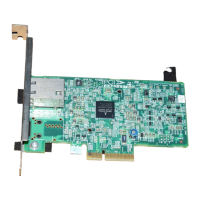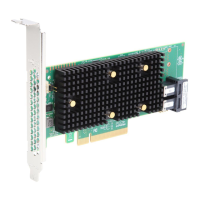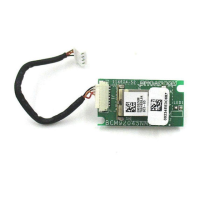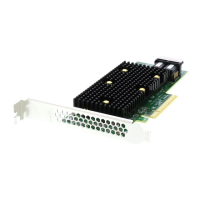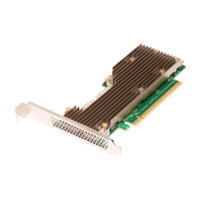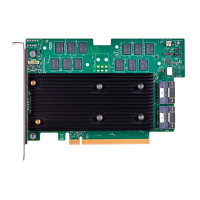Broadcom NetXtreme Ethernet Adapter • Diagnostic User’s Guide
page 31
Broadcom Confidential and Proprietary
Example:
b57diag –chksecfg file_p.txt (for single port devices)
b57diag –chksecfg file_p.txt file_s.txt (for dual port devices)
-nosz disable storing NVRAM and TPM size in NVRAM
Disable the storing of the TPM and NVRAM size in NVRAM when diagnostics is run from
the command prompt. Use the "-nosz" option when repeatedly power cycling a system in
order not to exhaust the total NVRAM write cycles.
-smbaddr <hex1> | <hex2>…|<hex3> Configure ASF SMBus Addresses.
The option will configure the ASF SMBus Address field in ASF Configuration
block.
The option can take multiple parameters in HEX.
Example:
a. -smbaddr 45 (SMB Address = 0x45)
b. -smbaddr 45 6c (SMB Address for 1st device=0x45 and 2nd device = 0x6c)
This option must be used along with -c option. Number of parameters for - smbaddr
must be the same as number of devices selected by -c.
Example:
b57diag -c 0 3 6 -smbaddr 6c-6e -t abcd.
b57diag –c 0 –e b57kia –pasf asf.bin –smbaddr 66 –t abcd
-mfct <filename> updates the PCI SSID and SVID
Use this option to modify the PCI SSID and SVID stored in NVRAM. The new SSID and
SVID are specified in the file <filename>. The format of <filename> is specified in the
“EEPROM.TXT format” section below.
-sil suppresses warning messages of the “-firm” and “-firmall” commands
The warning message, “Boot code file and device type incompatible produced by the “-firm”
and “–firmall” commands is not displayed when the “-sil” command line parameter is entered
before the “-firm” and “–firmall” commands. The “-firm” and “-firmall” commands are
described below.
-rf <x> selects a reference device to use during external loopback
Use this option with the external loopback test D3 to select a reference card. During the
external loopback test the physical loopback can be provided with a RJ45 loopback plug or a
CAT5 cable connected to a reference device (which loops back the data).
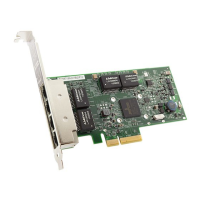
